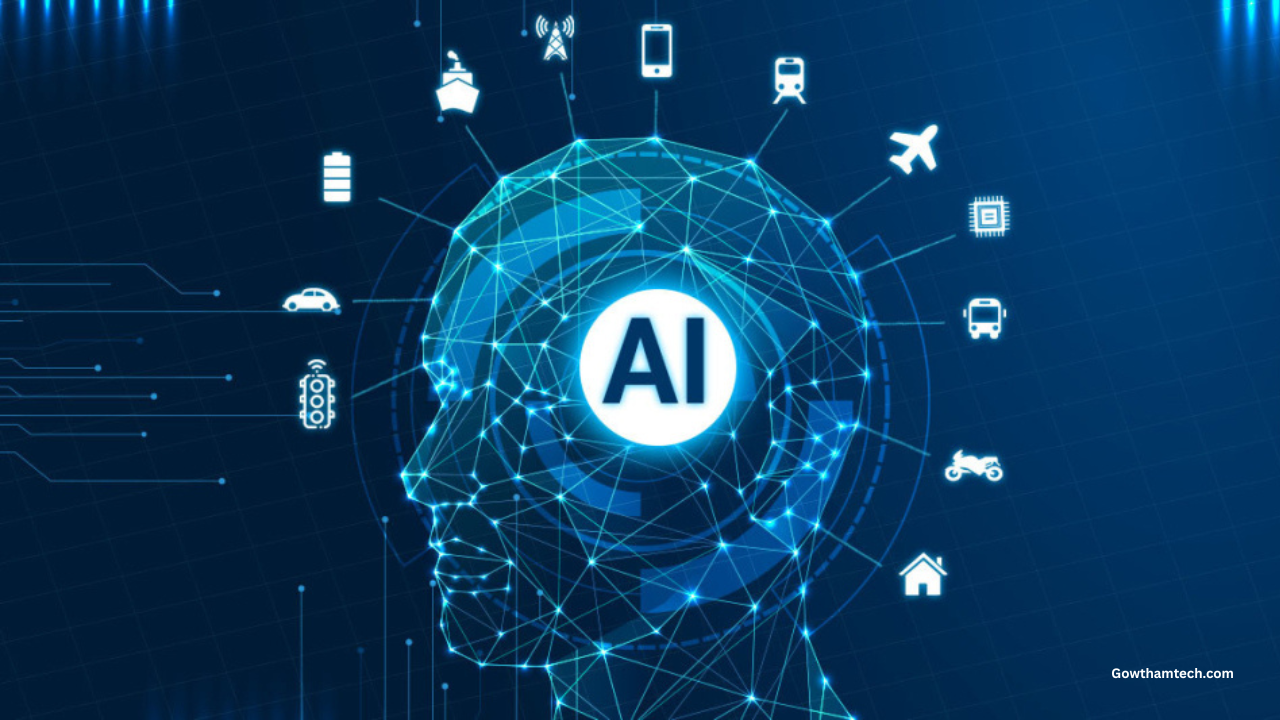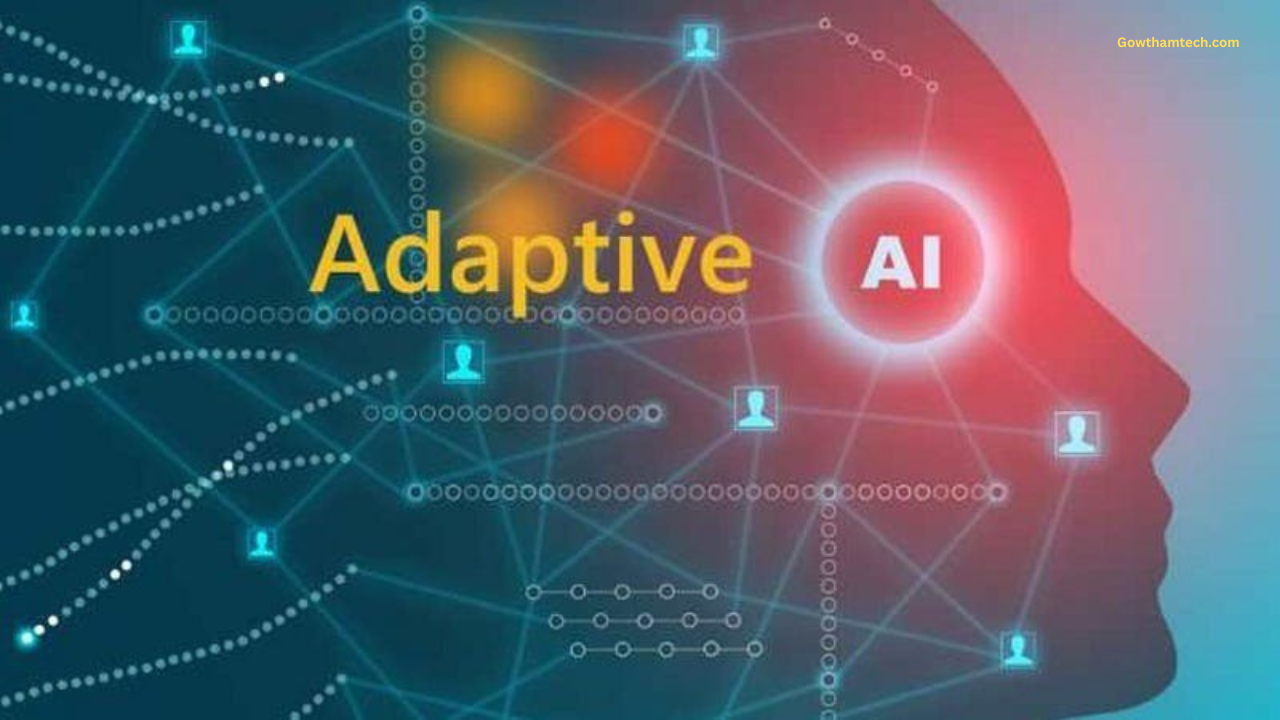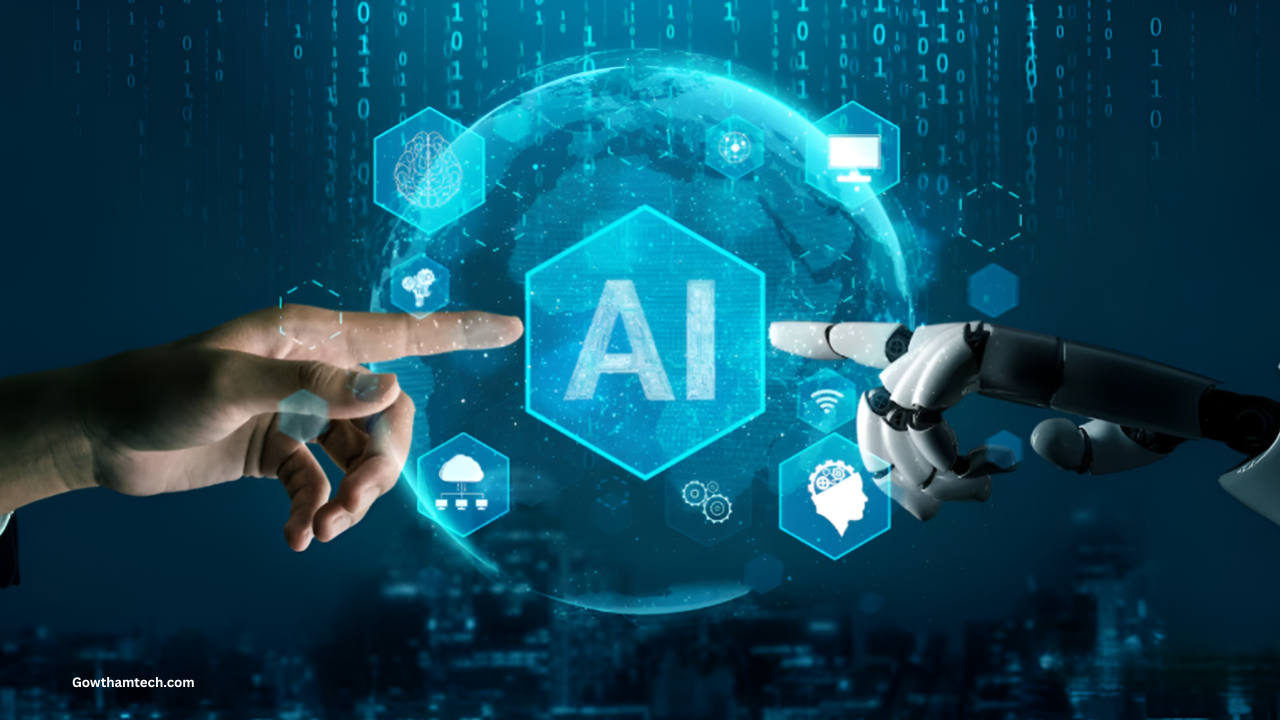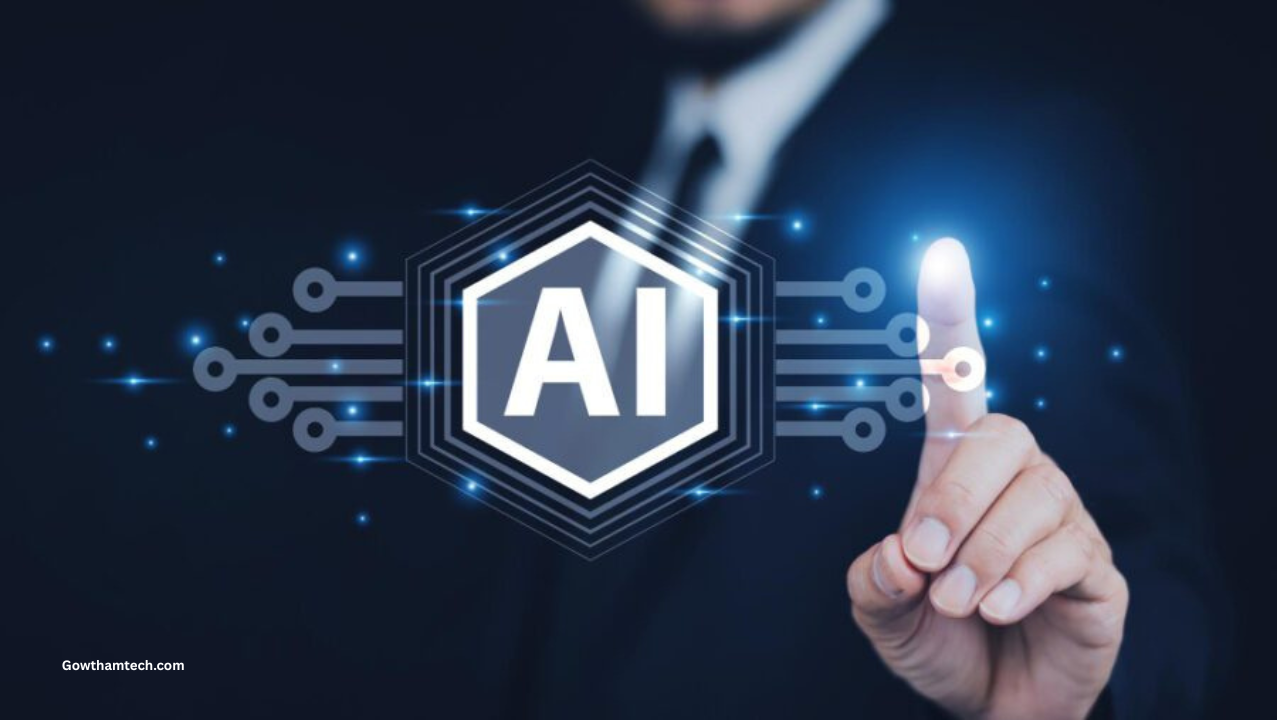The core of the concept is that Adaptive AI is class of artificial intelligence based systems designed to modify the algorithms and their models to adapt to changes in data or shifting operational context. The underlying concept is to create systems that can continually learn through their experiences..
thus improving the “understanding” of the world without the requirement for the manual full time training procedure. This is against to traditional machine learning in which model is only an unchanging representation of the information it was based on.
Adaptive AI is living system thats always immersed in improving and learning. To accomplish the above Adaptive AI is based on three basic concepts:
- Continuous learning: It is designed to absorb and process constant flow of information. Each interaction each new data element and every result is learning possibility. It is usually achieved by strategies like online learning in which the model is updated with its parameters gradually with each new data point rather than in massive batch sizes.
- Real Time Feedback Loops Adaptive AI is not single directional path of predictions and actions. It is equipped with strong feedback mechanisms which allow it to comprehend the effects of its actions. As an example an engine that recommends products doesnt only suggest product it tracks whether the customer decides to buy clicks or doesnt take the recommendation. This information is feed back to the algorithm instantly changing future recommendations. The result is loop of feedback action as well as improvement.
- Environment and Contextual Awareness: These systems are developed to be aware to changes in data patterns as well as the wider setting of their operations. This is essential to combat “concept drift” condition where the properties of statistical analysis of target variable shift in the course of. Adaptive AI for predictions of the market in particular needs to be in position to recognize and adjust to an abrupt shift from an upward trend to bear market acknowledging that the traditional regulations no longer work.
Many key machine learning techniques make up the core for Adaptive AI. Reinforcement Learning (RL) is the primary one in that an agent is taught to take the best decisions when performing actions within an context and then receiving reward or penalty.
It is innately adaptable since the system continually adjusts its plan to increase its overall reward. Online Machine Learning and Stream Learning are specifically designed for situations where data comes in at regular interval allowing models to change on the fly.
In addition Transfer Learning can be factor enabling the Adaptive AI machine to make use of the knowledge acquired in the course of one activity to better adjust to the new job. The combination of the two mechanisms provides Adaptive AI its distinctive ability to excel in the ever changing environment of 2025.
The Architecture of an Adaptive AI System
The development of truly Adaptive AI system will require more complicated and dynamic structure as compared to conventional AI model. Its not just about the deployment of an unchanging file. Its the creation of an entire system that is designed to be perpetually evolving. Although specific implementations differ however solid Adaptive AI architecture usually consists of multiple interconnected layers.
- Data Processing and Ingestion Layer It is the gateway of the system to the entire world. Its responsible for ingestion of data at rapid pace from many sources including user interaction IoT sensors market logs data feeds and so on. Importantly the layer doesnt only collect information but transforms it into format that the engine is able to consume instantly. It involves in real time process engineering of features regularization and verification to ensure that the information is accurate and reliable.
- Real Time Learning Engine It is the foundation of Adaptive AI. It contains the learning algorithms (e.g. reinforcement learning or online gradient descent) which continuously modify the parameters of the model. As new and processed data comes in from the layer of ingestion the engine instantly uses the data to improve the model. It isnt daily batch task; it takes place in milliseconds or even seconds. The engine also is in charge of detecting shift employing statistics to determine when the base pattern of data has changed dramatically and could trigger an additional model adjustment.
- The Decision Making and Action module Based on the most recent edition of the algorithm created by the machine learning engine the module is able to make predictions recommendations or choices. When it comes to an online shop it decides on which items to showcase. In the case of security system the module decides the best way to stop particular network request. It is crucial that the decisions it makes are based upon the latest information collected by the Adaptive AI.
- This is known as the Feedback Collection and Integration Loop The Feedback Collection and Integration Loop is the key part that closes the loop and allows for real adaptive. The layer is meticulously tracking the results of actions taken by the module. Did the user visit the suggested link? Was the machine optimized part not work as anticipated? The blocked network request in fact harmless? The resultant data is captured in structured format and then immediately is fed back to Data Ingestion Layer Data Ingestion Layer starting new. Continuous feedback is vital to every Adaptive AI system.
- The Monitoring and Governance Layer The constant evolution of AI is unique challenge for monitoring and controlling. This layer is crucial in ensuring that the system functions within the safest and most ethical limits. It is responsible for monitoring important performance indicators (KPIs) as well as tracks model shift over time and provides explanation tools to determine the reason why Adaptive AI is making specific decisions as well as “guardrails” or overrides that permit human users to intervene when the systems behaviour starts to differ from the intended outcomes. In the absence of this layer of governance it is possible that an Adaptive AI could “learn” undesirable or harmful behavior from its surroundings.
Applications of Adaptive AI in 2025: World in Flux
In 2025 the potential effects on the future of Adaptive AI is not just theoretical notion and is now real impact that is changing the entire industry through providing competitive advantages within dynamic contexts. Its capacity to adapt and learn continuously has enabled the potential for new levels of personalization efficiency as well as resilience.
Personalized Marketing and Commerce: The static recommendations engines that were used in the past are out of date. Modern day e commerce platforms employ Adaptive AI to provide truly interactive customer experiences. It learns from every move click or hover and even purchase instantly. When person suddenly begins looking for hiking equipment The entire experience of the site from the layout of the homepage to promotions emails changes immediately. For marketing Adaptive AI adjusts the bidding strategy for ads as well as creative content and channels every second based on the performance of campaigns making sure that the marketing budget is optimized to the present moment and not the last few weeks trends.

Dynamic Financial Services Financial markets operate in whirlwind which is why Adaptive AI is the only method to keep up with. Algorithmic trading systems employ Adaptive AI to adapt their strategies at rapid pace according to fluctuations in the market as well as news and the dynamics of order flow. When it comes to fraud detection these algorithms recognize patterns in new fraudulent schemes when they become apparent and do not have to wait to analysts to manually change regulations. They are able to recognize and stop illegal transactions in matter of milliseconds. which is not possible with static models which are constantly just one step ahead of criminals.
smart Manufacturing and Supply Chains that are Resilient: Industry 4.0 is enabled through Adaptive AI. In the factories predictive models for maintenance continuously study sensor data changing their forecasts about possible malfunctions of equipment as the operating conditions and wear patterns shift. For logistics Adaptive AI redirects supply chains across the globe immediately as response to the weather geopolitical issues interruptions or abrupt increases in demand. It improves the level of inventory that are not determined by historical predictions but rather with constantly evolving comprehension of the global demand and supply. This results in degree of flexibility and resiliency that previously was unattainable.
personalized healthcare and medicine: Adaptive AI has revolutionized the way patients receive care. Wearable devices are able to feed live health information into systems that can adapt treatments for chronic illnesses such as diabetes based on the patients current activity levels and the glucose readings. For clinical environments Adaptive AI can be used to create “digital twin” simulations of patients. It allows physicians to determine how patients may react to various treatment options through model which continually changes to the most recent lab outcomes and vital health indicators.
Next Generation Cybersecurity The cybersecurity battleground remains in flux. Hackers are constantly inventing new strategies that render signature based or rule based detection systems useless. Adaptive AI provides an agile defense. It creates baseline for regular network behavior and then continuously adjusts its base. If new attack or zero day one occurs the system senses the deviation as an anomaly from its ever changing norms and is able to identify the danger prior to it causing damage. Self learning is the most effective defense against advanced computerized cyber attacks.
Developing and Implementing Adaptive AI: Practical Guide
Moving from traditional machine learning to the Adaptive AI framework is major project that requires major shift in the way we think use tools and strategies. Its not about one task and more about creating an ongoing ever changing capability. In order for organizations to benefit from the capabilities in Adaptive AI in 2025 few key aspects are essential.
- Building for Real Time Data The base of any Adaptive AI is robust and scalable infrastructure for data that is capable of processing high speed stream of data. This requires shift away from batch processing traditional databases and adopting new techniques such as Apache Kafka an event streaming platform and streaming processing engines like Apache Flink as well as Spark Streaming. The entire pipeline of data is required to be optimized for low latency processing to ensure that the feedback loop runs at speed that is sufficient to perform effectively.
- Selecting the right learning paradigm There are not all problems that require the most intricate Adaptive AI solution. It is crucial to adapt the method to the specific use. In some cases using straightforward online model of learning that is updated each time there is new information point could be enough. In more intricate interconnected environments such as optimizing the user interface or operating robots the reinforcement model is more appropriate. Understanding these various learning models is crucial to the development team.
- Engineered Robust Feedback Mechanisms The effectiveness of the Adaptive AI is directly proportional to the efficiency of the feedback loop it uses. It is essential to engineer it with care to precisely capture the results of AIs actions. This could be as simple (e.g. the tracking of an individuals click) or extremely complex (e.g. tracking the lasting impact of recommendation from doctor). Its equally important to create systems that are able to solicit human input whenever confidence is low making it an “human in the loop” system that allows the Adaptive AI to draw on the expertise of experts when faced with uncertain circumstances.
- Accepting MLOps in dynamic world The traditional machine Learning Operations (MLOps) focuses on monitoring and deploying static models. MLOps are used for Adaptive AI is significantly more intricate. It needs sophisticated monitoring instruments not only to monitor the performance of the system (like time and latency) but also for the behavior of models. These include real time dashboards that are capable of keeping track of concept drift predictions distribution as well as the frequency of model update. Also the model must be automated with “guardrails” and alert systems to inform operators when the behavior of the model begins to be erratic or unbalanced which allows for quick intervention.
- It is essential to cultivate the best talent. The development of Adaptive AI systems requires multidisciplinary team. Data engineers are required that specialize on streaming data machine learning researchers with deep understanding of reinforcement and online learning as well as software engineers that can create high performance low latency apps. Additionally you need domain experts that can assist in defining the appropriate feedback signals and corporate goals to ensure that Adaptive AI optimizes for the things that matter most to the company.
Challenges and Ethical Frontiers of Adaptive AI
The capability the ability of Adaptive AI to grow and adapt by itself brings the possibility of myriad of problems and profound ethical issues. When these systems are becoming more autonomous making sure theyre secure fair and in line with the human value system is an important aspect for 2025.
The Risk of Drift: The very characteristic which creates Adaptive AI powerful its capability to modify itself is also the threat. The drift of data (when the data input is changed) as well as concepts drift (when the relation between outputs and inputs shifts) can lead to an algorithms performance to decline silently. The most dangerous threat is “runaway feedback loops” in which models forecasts begin to alter the surrounding environment negatively which creates self reinforcing circle. In the case of an algorithm for pricing that is adaptive might be programmed to cooperate with competitors algorithm to inflate costs for customers in ways that no human being could ever program. Monitoring is constant and vigilant. crucial to detect and rectify the harmful behavior that emerges.

The Black Box Problem on Steroids: Explainability is issue for lot of AI models but the problem is particularly challenging in the case of Adaptive AI. What is the best way to explain the logic behind one thats significantly different from the one it was in the past? Its logic for making decisions is constantly changing. This makes debugging monitoring as well as ensuring compliance with regulations very challenging. If the Adaptive AI system is unable to resolve crucial error such as denying an application for loan or presenting an incorrect diagnosis or tracing the source within the constantly changing model can be daunting job. The development of new methods for explanation in real time is an important part of the research.
Security and adversarial attacks: The continuous learning process of Adaptive AI system provides brand new attack target. In the case of malicious actors they could try “data poisoning” attacks by deliberately feeding the system inaccurate data in the course of time slowly altering the systems behavior to benefit them. The adversary may learn about the way dynamic pricing system operates in order to feed the model inputs which can cause it to take unprofitable choices. The security of data input and feedback loops in the Adaptive AI is essential.
Ethics and Accountability The Adaptive AI learns from the reality of life and not the way it ought to be. When it is operating in the context of existing social beliefs it is able to quickly discover and amplify the effects of these biases. The hiring process that shows greater engagement from male applicants could change to prefer them greater in time resulting in feedback loop that is discriminatory. It raises the issue of accountability: if an autonomous self adjusting system results in harm whos the one to blame? The person who originally programmed the system? The person who owns the system? The person who is responsible for the information? The legal and ethical systems struggle to keep pace with the autonomy offered by Adaptive AI.
The Future of Adaptive AI: Towards Truly Autonomous Systems
The path of Adaptive AI is not over. If we take look at 2025 it is evident that the path ahead will be moving towards higher autonomy greater comprehension and seamless integration into the web of physical and digital realms. Advancements in the near future are expected to make bigger impact as what weve experienced in the past.
Convergence Generative as well as Agentic AI: The next frontier will be the merging of various AI concepts. Imagine an Generative AI content creator who is as well an Adaptive AI. It doesnt simply create text or images in response to the prompt but it will continually alter the style tone and content based on live metrics for engagement of the audience. In the same way mixing Adaptive AI with Agentic AI will lead to autonomous agents who not only perform tasks but also understand and refine their strategies to achieve their goals from each step they make in their environments. The result will be AI systems that arent just responsive but as well organized proactive and strategically.
Multimodal and lifelong learning: Future Adaptive AI technologies are set to break out of strict task specific constraints. Theyll be created to support “lifelong learning” capable of learning and sharing information across variety of subjects and activities throughout their operational life. It will also incorporate multimodal education in which Adaptive AI can make sense of and synthesize data that comes from images text audio and sensor data in single session resulting in greater and more complete knowledge of the environment. This can lead to greater flexibility and general intelligence system.
Achievable and reliable adaptation: Addressing the “black box” issue is of paramount importance. Research in the future will provide innovative techniques to make the adaption process much more clear. It will be interesting to see the evolution of Adaptive AI that is able to not only alter its behaviour but also explain the reasons its changing with way that is understandable by humans. This is the key to creating confidence. The systems are equipped to offer “learning path audits” showing the way in which their choices have changed in time and which specific information points have influenced these adjustments.

The democratization of Adaptive AI: Currently creating solid Adaptive AI systems require lot of expertise and money. Over the next few years there will be an increase in the power of and user friendly systems and tools that can help to make this technology accessible to everyone. No code platforms or low code ones allow businesses with small departments of data science to create and control Adaptive AI solutions which will make the advantages of adaptive real time technology accessible to an even wider range of businesses.
The goal of Adaptive AI is to develop systems that reflect the amazing adaptability and flexibility of human intelligence. The AI can be deployed in unique environment. It will via interactions and exploration master the rules devise efficient strategies and continually enhance its capabilities without intervention from humans. Though this remains in the future however the strides were doing in 2025 is helping to pave the way to this intelligent future.
Thriving in the Era of Adaptation
The concept of artificial intelligence has changed fundamentally. The world has moved away from time of static models that were pre trained to the age of dynamic live evolving models. The 2025 roadmap illustrates Adaptive AI is no longer just idea from the future but an actual real world phenomenon and an essential source of creativity and resilient. Its capacity to continually learn from the real time information and feedback loops can distinguish the best from the losers in almost all industries.
Weve explored the fundamental concepts that make up Adaptive AI deconstructed its complicated architecture and discussed its revolutionary uses ranging from personalized shopping to health saving self defense and security networks. Additionally weve tackled the major ethical and technical challenges that require our attention such as limiting feedback loops that can become chaotic to the need to ensure fairness and accountability within systems that change in their own way.
Accepting Adaptive AI requires more than just an technological advancement; it is an overhaul of the culture. This means changing from an attitude that is “building and deploying” to one that is “launching and evolving.” It is requirement for committing to building robust ecosystems of data that foster interdisciplinary expertise and creating solid management to manage these platforms in responsible manner.
The future is defined through change. The industries businesses and communities that prosper will be those that have the greatest flexibility. Through harnessing the potential in Adaptive AI were not simply developing smarter tools. We build partners for adaption and creating tools that will aid us through the challenges and uncertainty of the future. The time for adaptation is now upon us and Adaptive AI is the key catalyst for this change.





